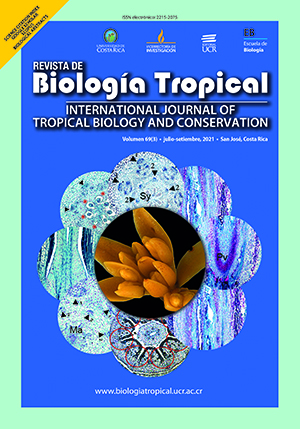Abstract
Introduction: Although olive ridley sea turtles (Lepidochelys olivacea) are the most abundant sea turtles in the world, quantitative information is scarce and unevenly distributed among regions. There are many management and conservation programs for this species, and assessments are necessary to identify nesting trends and effectively manage current conservation programs. PROTORMAR-UAS is a Research and Conservation program for the olive ridley turtle created by the Autonomous University of Sinaloa, Mexico. The program utilizes two biological stations: Santuario Playa Ceuta (SPC) and Playa Caimanero (PC). Objective: To evaluate the nesting trend of olive ridley turtles on two beaches in Northwestern Mexico and to predict prospective nesting trends for the next 30 years. Methods: Using annual nesting data collected over 40 years at SPC (1976-2016) and 30 years at PC (1986-2016), we evaluated nesting trends, hatching success, predation and poaching of olive ridley turtles on the two beaches in Northwestern Mexico. Then, prospective nesting estimates for the next 30 years were calculated predictive time series model. Results: A positive and significant correlation was identified between the number of annual nests and time for both beaches (rho = 0.850, P ≤ 0.01 for SPC; rho = 0.677, P ≤ 0.01 for PC); the average hatching success rates were 65.09 at SPC and 60.72 % at PC. The predictive time-series model indicated that the numbers of nests will continue to increase through 2045, increasing three-fold at SPC and six-fold at PC with respect to the last year of monitoring. Conclusions: There was a clear positive trend in the number of olive ridley sea turtle nests at both sites, which is consistent with trends found in other recent studies from the region. Therefore, we suggest that PC be designated a legally protected nesting area since it is located within the latitudinal limits of olive ridley nesting and given the need for resources for camp operation considering increased nesting and current problems with predation and poaching. Because in Mexico operating a nesting beach without any protection status implies not having a budget for its management.

This work is licensed under a Creative Commons Attribution 4.0 International License.
Copyright (c) 2021 Revista de Biología Tropical


